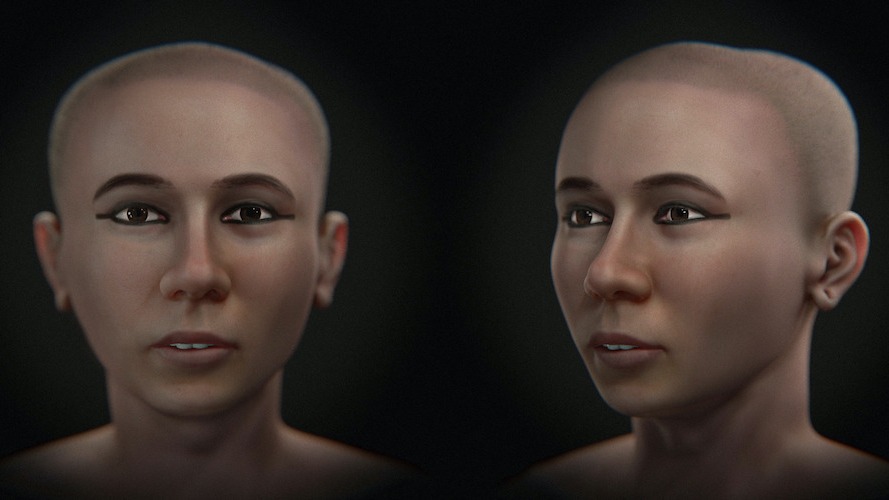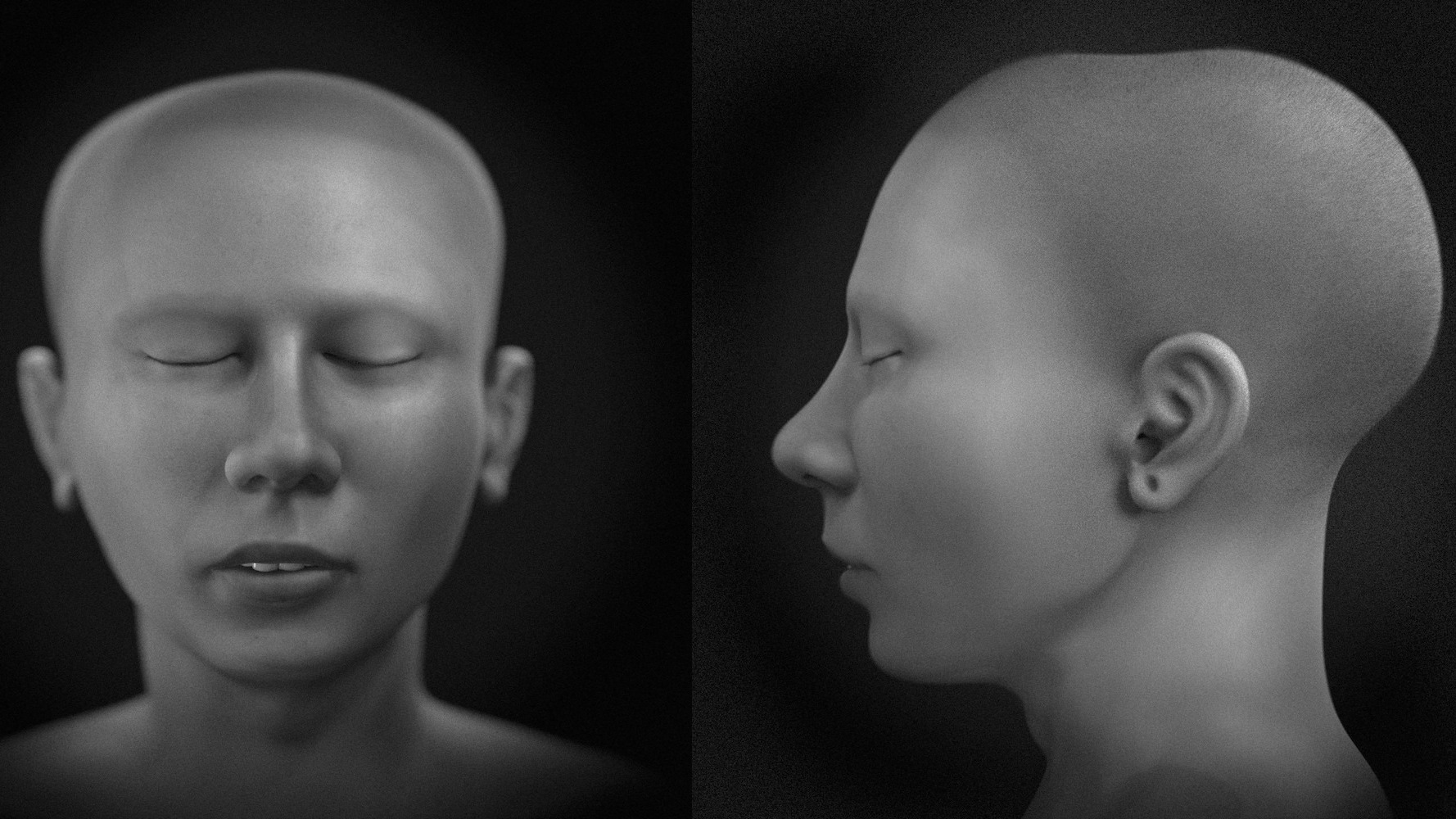King Tut's likeness revealed in vivid new facial approximation of ancient Egyptian pharaoh
Researchers created a facial approximation that reconstructs what the ancient Egyptian pharaoh Tutankhamun may have looked like.

The pharaoh Tutankhamun, also known as King Tut, is arguably the best-known ruler in ancient Egyptian history. And while much has been written about the royal youth, who held the throne from about the age of 9 until his death a decade later around 1323 B.C., his actual appearance is still a matter of debate.
But now, a new facial approximation provides a glimpse of what the historical figure may have looked like, revealing new insight into some of the former king's more peculiar facial characteristics.
"Tutankhamun is of archaeological interest not only because of his world-famous burial treasure, but because he ruled for a decade at an important phase in Egyptian history," Michael Habicht, a senior research fellow at Flinders University in Australia and co-author of the new research, told Live Science in an email. Tut's father, the revolutionary pharaoh Akhenaten, had discouraged worship of all gods except Aten, the sun disc. But Tut did not follow his father's ways.
"His reign saw a return to the old gods after his father Akhenaten's new [Aten] cult had failed and plunged the land on the Nile into chaos," Habicht said. "Therefore, a forensic facial reconstruction is helpful to get an idea of the appearance of the young king."
To make the three-dimensional facial approximation of King Tut, an international team of researchers used existing CT (computed tomography) scans of the mummy's complete skull. They also referenced X-rays and measurements of the skull taken by archaeologists, according to a study published online in May.
Earlier research had noted that Tutankhamun's skull was slightly longer than normal. The new investigation found additional evidence for this finding: While studying the data, the researchers noticed that he had not only a uniquely shaped head but also an exceedingly large brain volume, especially when compared with cadaver skulls whose scans were also available in the research database. The average man has a brain volume of approximately 75 cubic inches (1,234 cubic centimeters), whereas the pharaoh's was 87 cubic inches (1,432 cubic cm).
Related: What did King Tut look like?
Get the world’s most fascinating discoveries delivered straight to your inbox.
"His skull has a particular shape; in our study the measurements showed affinities with skulls that underwent [skull reshaping], but this does not seem to be the case of Tutankhamun, because although it has a peculiar, elongated shape, everything indicates that it is a natural skull," study co-researcher Cícero Moraes, a Brazilian graphics expert, told Live Science in an email. "Interestingly, its structure differs from the characteristics of other Egyptian mummies present in our database."
The researchers created two facial approximations. The first was an "objective" grayscale image showing the pharaoh with his eyes closed in a neutral position. The second, a colorized version that offers "the necessary elements for a complete humanization," depicts a young man with a shaved head and a dark skin tone wearing eyeliner, as was the style at the time, according to the study.

"The objective version is, to my mind, more compelling, with the protuberance of the teeth well noted, and a realistic asymmetry given to the face," Salima Ikram, a distinguished professor of Egyptology at The American University in Cairo who was not involved in the study, told Live Science in an email. "The group has bravely based their reconstruction on largely published materials and used robust methodology to carry out the reconstruction," she said, adding that "the face that they have created is rather reminiscent of the version that the French generated based on the CT scans several years ago."
This is far from the first time that a facial approximation has been made of King Tut. In 1983, forensic artist Betty Pat Gatliff created a reconstruction using a plaster cast of his skull. And in 2005, researchers based in France, the United States and Egypt worked in tandem to create their own separate approximations.
"We can put one more piece in that great and mysterious puzzle that is the story of Tutankhamun," Moraes said.
Jennifer Nalewicki is former Live Science staff writer and Salt Lake City-based journalist whose work has been featured in The New York Times, Smithsonian Magazine, Scientific American, Popular Mechanics and more. She covers several science topics from planet Earth to paleontology and archaeology to health and culture. Prior to freelancing, Jennifer held an Editor role at Time Inc. Jennifer has a bachelor's degree in Journalism from The University of Texas at Austin.


